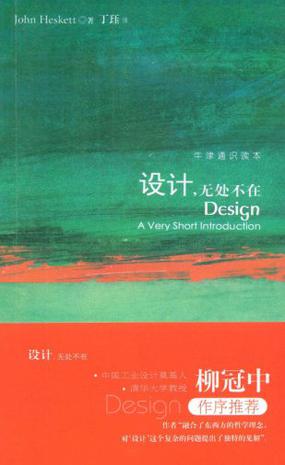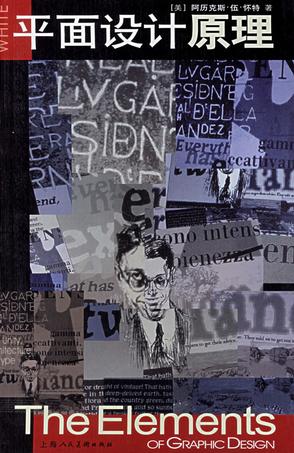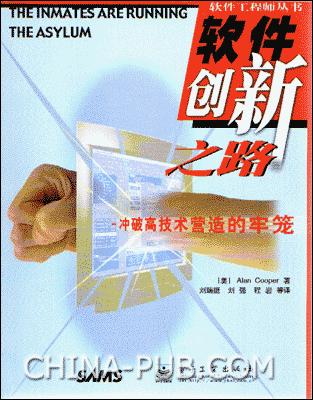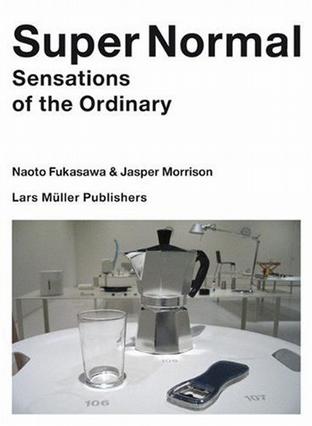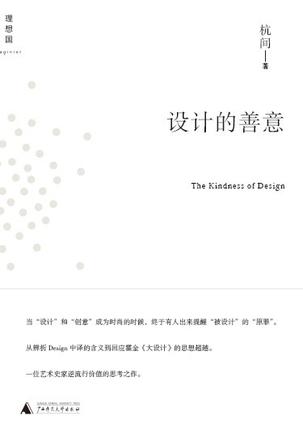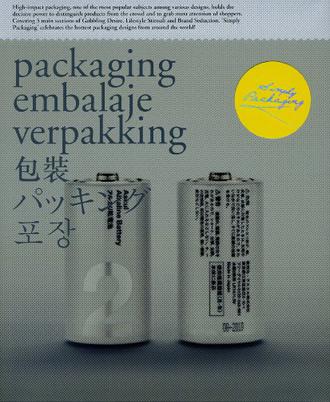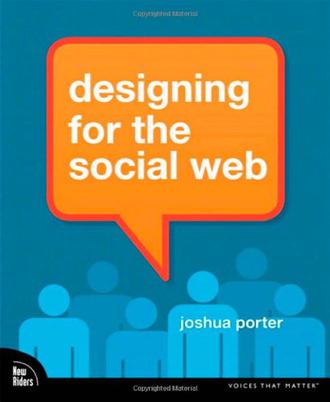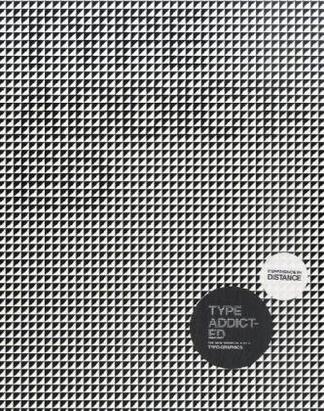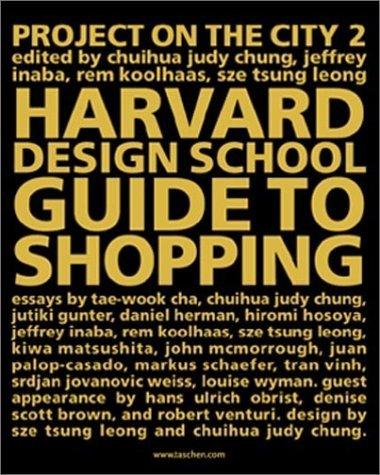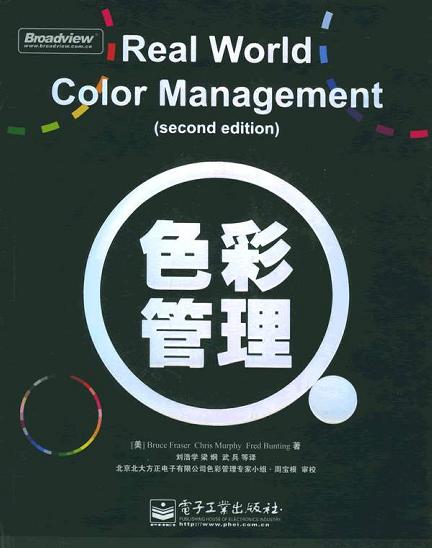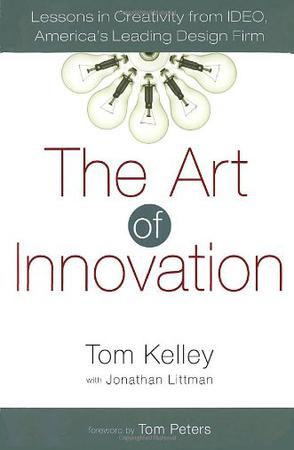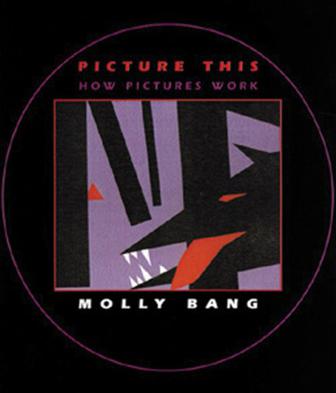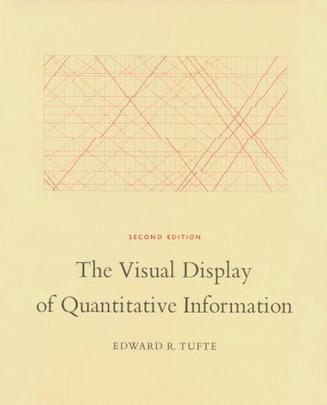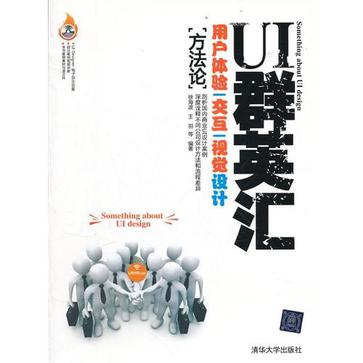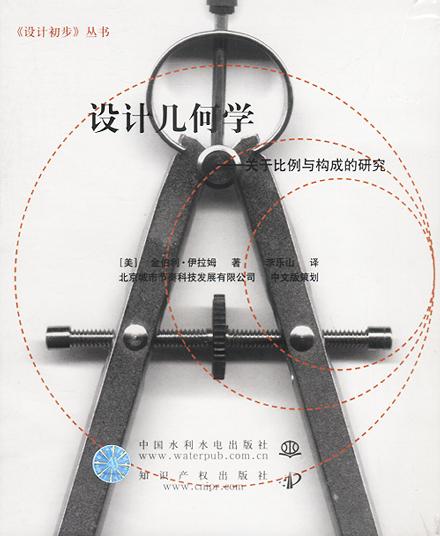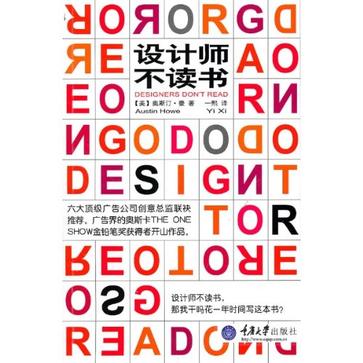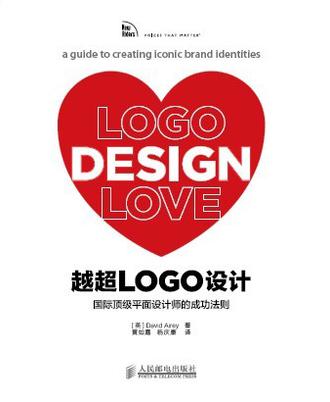欢迎来到相识电子书!
标签:Design
-
设计,无处不在
《设计,无处不在》从早餐时喝粥用的汤勺到救人性命的医疗设备,设计无处不在。设计不仅涵盖了风格和品味,还融入了文化与个性的影响。当代设计将“需要”和“期望”相结合,借助形式和装饰反映了不同的身份和多样的向往 编辑推荐 《牛津通识读本:设计,无处不在》由中国工业设计奠基人,清华大学教授柳冠中作序推荐。《牛津通识读本:设计,无处不在》以英汉双语形式呈现,方便对照阅读。《牛津通识读本:设计,无处不在》中附有英汉对照索引,方便随时查阅。 名人推荐 有关设计过程的图书很多,这一本据我所知是其中最好的一本。设计从各个方面深刻地影响了我们的生活,本书的创作理念正是在此基础之上萌发的。 ——英国设计大师 特伦斯•康兰 -
平面设计原理
图书简介: 这部具有开创性的著作为设计师、艺术指导和学生,无论他们的经验如何,提供了通向成功的设计的独特方法。在他对使视觉设计醒目和清楚易读的要素的探索中,经验丰富的设计师和教育家阿历克斯·伍·怀特收集了大量的资料和例子,学习怎样使用: ·限定和表现主导图像、词汇和概念 ·运用规模、色彩和位置引导观者穿过主次等极进行阅读 ·把空白空间作为设计的一个重要组成部分,而不仅仅只是背景 ·运用特排和正文字体使读者能够最大程度地理解和重视它 从设计、绘画、建筑和版画以及作者自己的文件资料中选出来的数百幅插图使甚至是最抽象的概念都变得通俗易懂。为思考和运用4种设计要素提供了一个新的方法,本书一定能够促成、产生更好的设计。 阿历克斯·伍·怀特曾经为许多杂志和标识方案决策。他是许多种出版物的顾问,广泛地为美国和欧洲的专家作了有关排印和设计的演讲。他是广受赞誉的《通用字体》一书作者,现居住在纽约。 -
博凯伶平面设计师之设计历程
《博凯伶平面设计师之设计历程》芬兰的设计领域不乏富有创造力的设计师,博凯伶就是一例。他的作品非常优秀:直接、毫不含糊的感性颜色,充满魅力与诱惑,但又从不愚弄观众。聪明之处在于它所强调的是一种高贵的自律,人们必须仔细地加以观赏。他的海报洋溢着一种吸引人们去分析的美丽。寥寥数种颜色,细腻的动感就从那稳固扎实的作品中浮现出来,然后就是那种永远的打破常规,挑起悬念的关键细节。 -
软件创新之路
这不是一本教你如何编程的书,但却是软件工程师不可不读的书。 本书作者Cooper被誉为“VB之父”。他针对基于电脑的产品难学、难用、难以理解的弊病,提出了软件设计应分为两部分:交互设计与编码设计。本书通过大量的商务案例,“透彻地描述了我们面临的挑战,并从方法学上提供了逃离我们自己热心营造的技术牢笼的指南。” 本书观点独特,描述生动,实例丰富,分析深刻,方法具体而且有效,是软件项目经理、 -
Super Normal
The designers Jasper Morrison and Naoto Fukasawa have compiled 204 everyday objects in search of "super normal design": alongside examples of anonymous design like the Swiss Rex vegetable peeler or a simple plastic bag, there are design classics like Marcel Breuer’s tubular steel side table, Dieter Ram’s 606 shelving system, or Joe Colombo’s Optic alarm clock of 1970. With products by Newson, Grcic, the Azumis, and the Bouroullec brothers, it also represents the generation to which Morrison and Fukasawa belong. The phenomenon of the super normal is located, as it were, beyond space and time; the past and present of product design both point to a future that has long since begun. The super normal is already lying exposed before us; it exists in the here and now; it is real and available: we need only open our eyes; Fukasawa and Morrison make it visible for us. -
设计的善意
当“设计”和“创意”成为时尚的时候,终于有人出来提醒“被设计”的“原罪”。 从辨析Design 中译的含义到回应霍金《大设计》的思想超越。 一位艺术史家逆流行价值的思考之作。 本文集汇总了他自2006年以来最重要的有关于设计的文章,其中既有作为教育工作者对设计教育的思考和展望,也有作为充满情怀的学者对设计本来面目的追索与探讨;既有在全球化大格局下,设计作为创意文化产业龙头的责任意识,又有回归生活本真,怀抱理想主义的设计原乡情怀。 -
Simply Packaging
Packaging is an indispensable part of life. It’s a silent means of one-way communication derived from the instinct to impress and catch attention. In a world where consumers are drowned in choices, high-impact packaging is simply capable of elevating the status of ordinary products, so as to project a long-lasting identity – allowing no more than a few seconds for end users to spot the product from the crowded shelf. Simply Packaging, the third and final volume of the SimplySeries™ series, captures the ever-evolving art of packaging design and its reflection of the times. Examining the subject in 3 main sections, namely Brand Seduction (branding & identity), Lifestyle Stimuli (lifestyle products) and Gobbling Desires (for food & beverages), the title celebrates the hottest packaging designs from around the world! -
Designing For The Social Web
No matter what type of web site or application you’re building, social interaction among the people who use it will be key to its success. They will talk about it, invite their friends, complain, sing its high praises, and dissect it in countless ways. With the right design strategy you can use this social interaction to get people signing up, coming back regularly, and bringing others into the fold. With tons of examples from real-world interfaces and a touch of the underlying social psychology theory, Joshua Porter shows you how to design your next great social web application. Inside, you’ll discover: • The real reasons why people participate online and the psychology behind them • The Usage Lifecycle—or how people use your web application over time • How to get people past that trickiest of hurdles: sign-up • What to do when you’ve launched a web application and nobody is using it • How to analyze the effectiveness of your application screens and flows • How to grow your social web application from zero users to 1000—and beyond Designing for the social web is about much more than adding features. It’s about embracing the social interaction of the people who make you successful—and then designing smartly to encourage it. -
Type Addicted
Lettering is a key visual element of great design. The right type can transform any project from mundane to extraordinary, and how to choose and treat font and lettering is a common challenge among designers and artists from every discipline. Type Addicted not only presents a rich selection of experimental and inspirational typefaces and their applications, it also reveals the diversity of innovative approaches used by contemporary designers to set tone, add impact, reinforce brand identity, and lend character to print and design work in various disciplines. Solutions to any type of dilemma are sure to be discovered among the pages. Examples include work by up and coming names as well as renowned icons from around the world. -
The Harvard Design School Guide to Shopping / Harvard Design School Project on the City 2
For several years, Harvard's design graduates concentrated their studies on the phenomenon of shopping as a primary mode of urban life. As Sze Tsung Leong writes, "Not only is shopping melting into everything, but everything is melting into shopping." ICK! So why did we pick up this book? Because Hannah at Quimby's told us to. Hannah's right; the design is very impressive, even if the motivation for it creeps us out. -
The Art of Innovation
在线阅读本书 Book Description IDEO, the widely admired, award-winning design and development firm that brought the world the Apple mouse, Polaroid's I-Zone instant camera, the Palm V, and hundreds of other cutting-edge products and services, reveals its secrets for fostering a culture and process of continuous innovation. There isn't a business in America that doesn't want to be more creative in its thinking, products, and processes. At many companies, being first with a concept and first to market are critical just to survive. In The Art of Innovation, Tom Kelley, general manager of the Silicon Valley based design firm IDEO, takes readers behind the scenes of this wildly imaginative and energized company to reveal the strategies and secrets it uses to turn out hit after hit. IDEO doesn't buy into the myth of the lone genius working away in isolation, waiting for great ideas to strike. Kelley believes everyone can be creative, and the goal at his firm is to tap into that wellspring of creativity in order to make innovation a way of life. How does it do that? IDEO fosters an atmosphere conducive to freely expressing ideas, breaking the rules, and freeing people to design their own work environments. IDEO's focus on teamwork generates countless breakthroughs, fueled by the constant give-and-take among people ready to share ideas and reap the benefits of the group process. IDEO has created an intense, quick-turnaround, brainstorm-and-build process dubbed "the Deep Dive." In entertaining anecdotes, Kelley illustrates some of his firm's own successes (and joyful failures), as well as pioneering efforts at other leading companies. The book reveals how teams research and immerse themselves in every possible aspect of a new product or service, examining it from the perspective of clients, consumers, and other critical audiences. Kelley takes the reader through the IDEO problem-solving method: > Carefully observing the behavior or "anthropology" of the people who will be using a product or service > Brainstorming with high-energy sessions focused on tangible results > Quickly prototyping ideas and designs at every step of the way > Cross-pollinating to find solutions from other fields > Taking risks, and failing your way to success > Building a "Greenhouse" for innovation IDEO has won more awards in the last ten years than any other firm of its kind, and a full half-hour Nightline presentation of its creative process received one of the show's highest ratings. The Art of Innovation will provide business leaders with the insights and tools they need to make their companies the leading-edge, top-rated stars of their industries. Amazon.com IDEO, the world's leading design firm, is the brain trust that's behind some of the more brilliant innovations of the past 20 years--from the Apple mouse, the Polaroid i-Zone instant camera, and the Palm V to the "fat" toothbrush for kids and a self-sealing water bottle for dirt bikers. Not surprisingly, companies all over the world have long wondered what they could learn from IDEO, to come up with better ideas for their own products, services, and operations. In this terrific book from IDEO general manager Tom Kelley (brother of founder David Kelley), IDEO finally delivers--but thankfully not in the step-by-step, flow-chart-filled "process speak" of most how-you-can-do-what-we-do business books. Sure, there are some good bulleted lists to be found here--such as the secrets of successful brainstorming, the qualities of "hot teams," and, toward the end, 10 key ingredients for "How to Create Great Products and Services," including "One Click Is Better Than Two" (the simpler, the better) and "Goof Proof" (no bugs). But The Art of Innovation really teaches indirectly (not to mention enlightens and entertains) by telling great stories--mainly, of how the best ideas for creating or improving products or processes come not from laboriously organized focus groups, but from keen observations of how regular people work and play on a daily basis. On nearly every page, we learn the backstories of some now-well-established consumer goods, from recent inventions like the Palm Pilot and the in-car beverage holder to things we nearly take for granted--like Ivory soap (created when a P&G worker went to lunch without turning off his soap mixer, and returned to discover his batch overwhipped into 99.44 percent buoyancy) and Kleenex, which transcended its original purpose as a cosmetics remover when people started using the soft paper to wipe and blow their noses. Best of all, Kelley opens wide the doors to IDEO's vibrant, sometimes wacky office environment, and takes us on a vivid tour of how staffers tackle a design challenge: they start not with their ideas of what a new product should offer, but with the existing gaps of need, convenience, and pleasure with which people live on a daily basis, and that IDEO should fill. (Hence, a one-piece children's fishing rod that spares fathers the embarrassment of not knowing how to teach their kids to fish, or Crest toothpaste tubes that don't "gunk up" at the mouth.) Granted, some of their ideas--like the crucial process of "prototyping," or incorporating dummy drafts of the actual product into the planning, to work out bugs as you go--lend themselves more easily to the making of actual things than to the more common organizational challenge of streamlining services or operations. But, if this big book of bright ideas doesn't get you thinking of how to build a better mousetrap for everything from your whole business process to your personal filing system, you probably deserve to be stuck with the mousetrap you already have. --Timothy Murphy From Publishers Weekly "Routine is the enemy of innovation," declares Kelley, general manager of IDEO, in this lively and practical guide to nurturing that elusive quality in all organizations. Dubbed "Innovation U." by Fortune and lauded as "the world's most celebrated design firm" by Fast Company, IDEO, through its work on over 3,000 new product programs, has developed a system for staying on the creative cutting edge while keeping clients happy. Kelley handily parses the components of this system--understanding the market, observing real-life users, brainstorming new concepts and developing and refining prototypes on a tight schedule to come up with a commercial product--with examples from the development of such pathbreaking products as the original Apple mouse and the Palm Pilot V. Kelley vividly conveys how "hot teams," assembled for specific projects with concrete goals and deadlines, are the foundation of IDEO's performance-based reputation. While he recognizes that not every organization is a hip design firm, Kelley believes that all organizations can gain an edge by innovating; among the successes he cites are Amazon, Igloo, Shoebox Greetings and Sephora. IDEO has learned and profited from maxims like "Fail often to succeed sooner." Many who previously feared change may answer his unpretentious call to "Start by following your customer journey, breaking it down into component elements, and asking yourself how you can deliver a better experience." Illustrations. (Feb.)Forecast: Featured in a half-hour segment of Nightline last year that ranked among the most popular aired on the show, IDEO's culture of innovation has received broad exposure. This well-written, well-organized and energizing guide will be a magnet for more attention, and could have a shot at business bestseller lists. Book Dimension length: (cm)24.3 width:(cm)16.1 -
Picture This
Everyone knows that a picture tells a thousand words. But what about the elements that make up a picture? Using the tale of Little Red Riding Hood as an example, Molly Bang uses boldly graphic artwork to explain how images—and their individual components—work to tell a story that engages the emotions: Why are diagonals dramatic? Why are curves calming? Why does red feel hot and blue feel cold? First published in 1991, Picture This fans will welcome the new edition's striking redesign and introduce its insights to many other artists and art appreciators alike. -
Picture This
Everyone knows that a picture tells a thousand words. But what about the elements that make up a picture? Using the tale of Little Red Riding Hood as an example, Molly Bang uses boldly graphic artwork to explain how images—and their individual components—work to tell a story that engages the emotions: Why are diagonals dramatic? Why are curves calming? Why does red feel hot and blue feel cold? First published in 1991, Picture This fans will welcome the new edition's striking redesign and introduce its insights to many other artists and art appreciators alike. -
The Visual Display of Quantitative Information
The classic book on statistical graphics, charts, tables. Theory and practice in the design of data graphics, 250 illustrations of the best (and a few of the worst) statistical graphics, with detailed analysis of how to display data for precise, effective, quick analysis. Design of the high-resolution displays, small multiples. Editing and improving graphics. The data-ink ratio. Time-series, relational graphics, data maps, multivariate designs. Detection of graphical deception: design variation vs. data variation. Sources of deception. Aesthetics and data graphical displays. This is the second edition of The Visual Display of Quantitative Information. Recently published, this new edition provides excellent color reproductions of the many graphics of William Playfair, adds color to other images, and includes all the changes and corrections accumulated during 17 printings of the first edition. This book celebrates escapes from the flatlands of both paper and computer screen, showing superb displays of high-dimensional complex data. The most design-oriented of Edward Tufte's books, Envisioning Information shows maps, charts, scientific presentations, diagrams, computer interfaces, statistical graphics and tables, stereo photographs, guidebooks, courtroom exhibits, timetables, use of color, a pop-up, and many other wonderful displays of information. The book provides practical advice about how to explain complex material by visual means, with extraordinary examples to illustrate the fundamental principles of information displays. Topics include escaping flatland, color and information, micro/macro designs, layering and separation, small multiples, and narratives. Winner of 17 awards for design and content. 400 illustrations with exquisite 6- to 12-color printing throughout. Highest quality design and production. Visual Explanations: Images and Quantities, Evidence and Narrative is about pictures of verbs, the representation of mechanism and motion, process and dynamics, causes and effects, explanation and narrative. Practical applications and examples include statistical graphics, charts for making important decisions in engineering and medicine, technical manuals, diagrams, design of computer interfaces and websites and on-line manuals, animations and scientific visualizations, techniques for talks, and design strategies for enhancing the rate of information transfer in print, presentations, and computer screens. The use of visual evidence in deciding to launch the space shuttle Challenger is discussed in careful detail. Video snapshots show redesigns of a supercomputer animation of a thunderstorm. The book is designed and printed to the highest standards, with luscious color throughout and four built-in flaps for showing motion and before/after effects. -
UI群英汇
《UI群英汇:用户体验•交互•视觉设计方法论》内容简介:由于国内UI设计领域目前还没有成型的理论体系,所以各公司目前的团队配备、设计流程、方法也各不相同。这也是我们把形形色色的商业设计案例同时编进这本书的原因。在本书中,你会看到各种不同类型的真实商业案例,有些来自大公司,有些来自小公司,有的是知名度极高的平台型产品,有的则是针对特定行业的专业产品。 《UI群英汇:用户体验•交互•视觉设计方法论》汇集国内多个典型商业案例,既探讨了大公司的严谨和规范,也分析了小公司的高效和经济。每一种方法都有它的优点、缺点,该如何取舍和应用这些方法,最关键的是靠读者根据自身项目和公司的实际情况去选择适合自己的方法。 《UI群英汇:用户体验•交互•视觉设计方法论》光盘包含部分案例素材和源文件、部分案例视频操作以及uirss电子杂志。 《UI群英汇:用户体验•交互•视觉设计方法论》读者群包含UI设计从业人员,大专院校相关专业师生以及所有对用户体验设计、GUI视觉设计感兴趣的读者。 -
设计几何学
他们都有各种自然比例规律,这些规律为许多艺术家和设计师的作品、甚至全部作品,提供了基本出发点。金伯利·伊拉姆揭示了这些具有启迪作用的自然系统中数学与美的神秘关系。她带我们进入了神奇的几何领域——黄金分割、完美的比例和斐波纳契数列,用平实的语言表达晦涩难懂的数学。自此,从扬·奇科尔德的海报到巴塞罗那椅到大众公司新款甲壳虫汽车,通过这些作品,伊拉姆向我们展示了设计背后是多么的对称、有序和视觉平衡。 《设计几何学》用它的细节简图,不仅解释了测量科学怎样提供信息,甚至创造自然界和艺术作品中的美,但更重要的是如何运用这些技术在我们自己的设计中创造美。 -
设计师不读书
《设计师不读书》是一本为创意专业人士“量身打造”,激发他们设计灵感的书。创意总监、广告撰稿人和设计的倡导者奥斯汀·豪对创意流程进行了研究,给才思枯渴的设计师们提供建议。全书分为若干主题,每个主题也设计了相应的阅读时间,旨在为致力于品牌传播的不同层次的设计师和专业人士们开辟新的思路。独特的内容编排、精巧的设计加上书中的妙手偶得,《设计师不读书》让时间紧迫的设计师们另辟蹊径,手捧此卷,欲罢不能。 -
超越LOGO设计
《超越LOGO设计:国际顶级平面设计师的成功法则》收录了国际顶级平面设计师DavidAirey的超人气博客中最受欢迎的设计案例,其中的每个案例都极具启发性和参考价值。作者在书中分享他职业生涯中的经验点滴,除了告诉你如何设计一个经得起时代考验的品牌标识,还详细地介绍了赢得客户的沟通技巧。 书中收录了许多经典LOGO的成功创意,包括Kellog.s(家乐氏)、TIME(时代杂志)、FedEx(联邦快递)、YellowPagesTM(黄页)等知名品牌的设计。凭借多年实战经验,David归纳出25条L。GO设计的成功法则,这些诀窍,可以帮助你达成目标,设计出不同凡响的品牌标识。
热门标签
下载排行榜
- 1 梦的解析:最佳译本
- 2 李鸿章全传
- 3 淡定的智慧
- 4 心理操控术
- 5 哈佛口才课
- 6 俗世奇人
- 7 日瓦戈医生
- 8 笑死你的逻辑学
- 9 历史老师没教过的历史
- 10 1分钟和陌生人成为朋友

